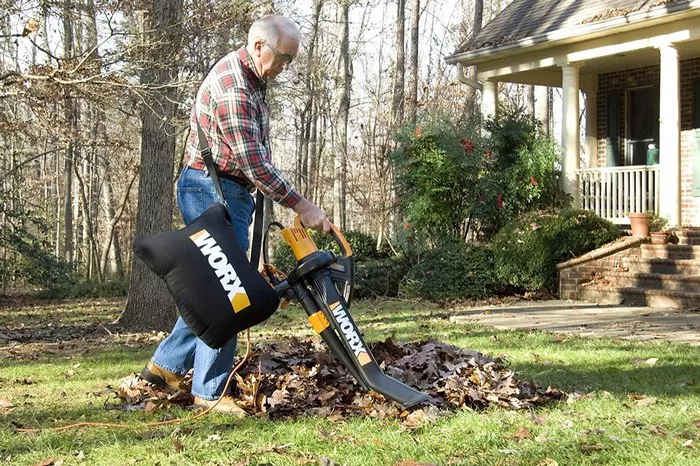Pine needles, commonly known as pine straw, are a frequent sight in many yards, particularly in areas with dense pine tree populations. These needles, while adding a rustic charm and potential mulch benefits, can also pose significant challenges for yard maintenance. They can create unsightly mats, smother grass, and become a fire hazard if not regularly cleared. For many homeowners, keeping their lawns free of pine needles is a persistent chore.
Among the various tools available for yard maintenance, lawn sweepers have become increasingly popular. These devices promise to ease the burden of yard cleaning by efficiently gathering leaves, grass clippings, and other debris into a collection hopper. However, an important question remains: Can lawn sweepers effectively pick up pine needles?
Lawn Sweeper Capabilities
Lawn sweepers operate on a simple yet effective principle. They use rotating brushes to lift debris from the lawn and deposit it into an attached hopper. The brushes are designed to reach into the grass and sweep out various types of yard waste, which makes them particularly useful during autumn when leaves blanket the ground.
Types of Lawn Sweepers
Lawn sweepers come in two main types: push lawn sweepers and tow-behind lawn sweepers.
Push Lawn Sweepers: These are manually operated and resemble a large broom with a hopper attached. They are ideal for smaller yards and can be maneuvered easily around tight spaces. Push sweepers are typically more affordable and user-friendly, making them a popular choice for average homeowners.
Tow-Behind Lawn Sweepers: These models are designed to be attached to a riding lawn mower or an ATV. They cover larger areas more quickly and with less physical effort from the user. Tow-behind sweepers are better suited for expansive lawns or properties with extensive landscaping.
The choice between these types can influence the effectiveness of pine needle collection, as push sweepers might struggle with large volumes of debris, while tow-behind sweepers can manage bigger loads more efficiently.
See also: An Overview: Do Lawn Sweepers Pick Up Pine Cones?
Effectiveness on Pine Needles
Pine needles present unique challenges that differ from other common yard debris like leaves or grass clippings. Their lightweight, narrow, and often prickly nature makes them harder to collect. Additionally, pine needles can interlace with grass, becoming embedded in the turf, which complicates the sweeping process.
Despite these challenges, lawn sweepers can generally pick up pine needles effectively, especially when used correctly. Here’s a closer look at the factors influencing their efficiency:
Needle Length: Shorter needles might be more difficult to collect as they can slip through the brushes or become entwined in the grass. Longer needles are easier for the brushes to grab and lift into the hopper.
Moisture Content: Dry pine needles are lighter and more likely to be moved by the sweeper’s brushes. Wet needles, on the other hand, can clump together and adhere to the ground, making them harder to pick up.
Ground Conditions: A well-maintained, level lawn provides a better surface for sweeping. Rough or uneven ground can hinder the brushes’ ability to pick up debris consistently.
Adjusting for Maximum Efficiency
To maximize the effectiveness of a lawn sweeper in collecting pine needles, several adjustments and techniques can be employed:
Height Settings: Adjusting the height of the sweeper’s brushes is crucial. If the brushes are set too high, they will miss the needles; if set too low, they can dig into the soil or grass, reducing efficiency and potentially damaging the lawn.
Multiple Passes: Sometimes a single pass is not enough to collect all the needles. Going over the area multiple times ensures a more thorough cleanup.
Dry Conditions: Attempting to sweep during dry conditions can significantly improve the collection rate. Pine needles are less likely to stick to the ground and more likely to be efficiently swept into the hopper when dry.
See also: A Comprehensive Guide: Do Manual Sweepers Work?
Alternative Solutions
In cases where pine needles prove particularly stubborn, there are alternative or supplementary methods to consider:
Leaf Vacuums: These devices can be more effective in collecting pine needles as they use suction to pull debris into a collection bag. Some models even come with a mulching feature, reducing the volume of collected material.
Lawn Mowers with Bagging Capabilities: Certain lawn mowers are equipped with bagging systems that can effectively collect pine needles while mowing the grass. This dual-purpose functionality can save time and effort.
Conclusion
Lawn sweepers, whether push or tow-behind, can be a valuable tool for collecting pine needles, although their effectiveness can vary based on several factors. Proper adjustments, such as setting the correct brush height and ensuring dry conditions, can enhance their performance. While not a perfect solution, they significantly reduce the manual effort required for yard cleanup.
For homeowners dealing with particularly stubborn pine needles, considering alternative tools like leaf vacuums or lawn mowers with bagging capabilities can provide additional support. Ultimately, the choice of yard cleaning method will depend on the specific needs of the property, the volume of debris, and personal preferences.
In conclusion, while lawn sweepers may not be a panacea for all pine needle problems, they represent a practical and efficient option for many homeowners seeking to maintain a clean and attractive lawn. With the right approach and tools, managing pine needles can be less of a chore and more of a manageable task.

